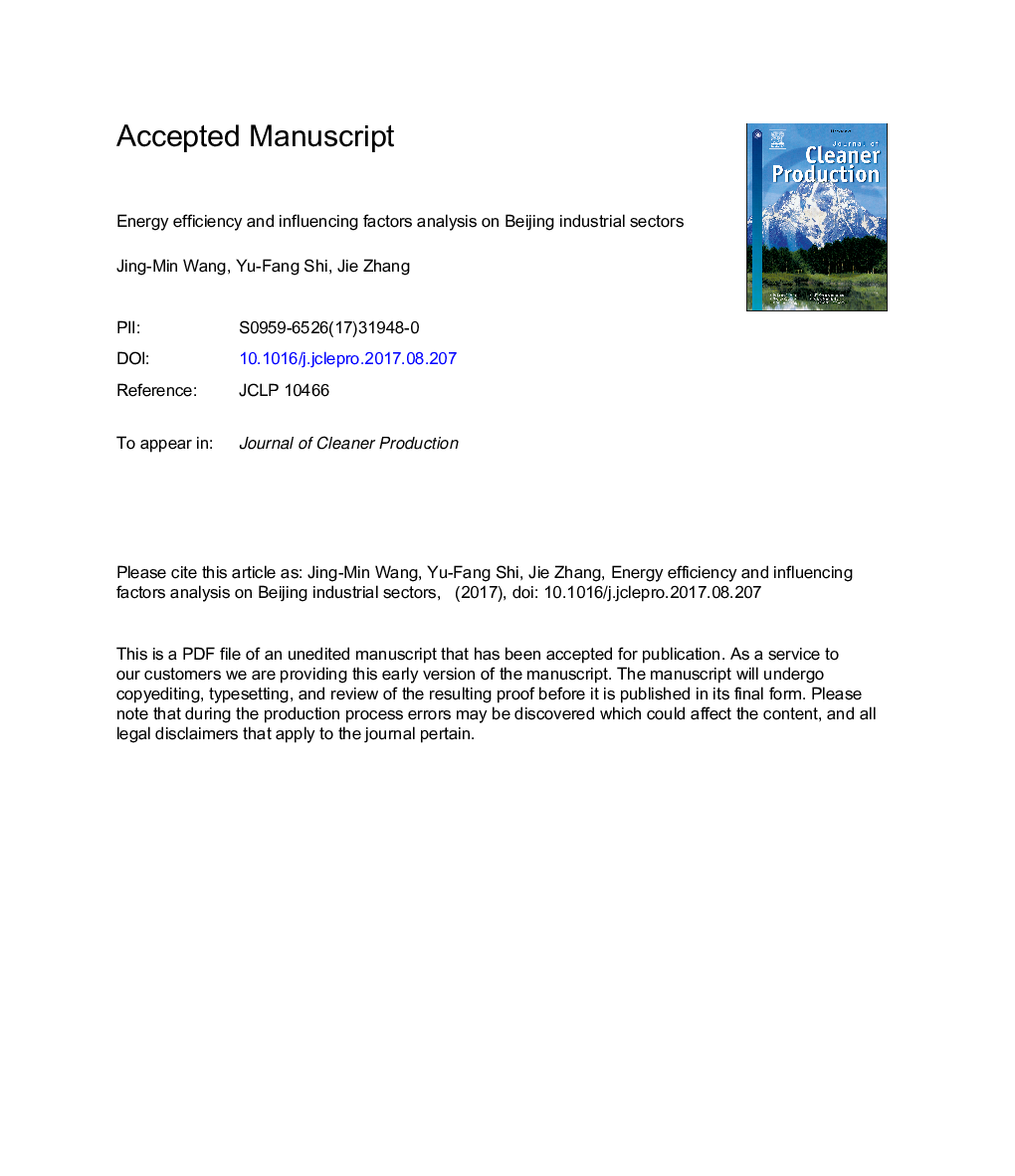| Article ID | Journal | Published Year | Pages | File Type |
|---|---|---|---|---|
| 5479481 | Journal of Cleaner Production | 2017 | 31 Pages |
Abstract
To shed unneeded functions in Beijing, the improvement of energy efficiency is necessary in the process of the collaborative development of Beijing-Tianjin-Hebei. Energy efficiency of 35 sub-industrial sectors in Beijing from 2005 to 2012 is measured based on the improved Bootstrap-DEA (Data Envelopment Analysis) model which deals with undesirable output. Results draw that, the overall industrial energy efficiency is high and shows an upward trend, but there are still differences among industries. 35 sub-industrial sectors are divided into three categories through the system clustering analysis. Most of the high energy efficiency industries are currently regarded as the main pillar industries in Beijing, and the low energy efficiency industries are the key transferred industries in the future. The influencing factors of energy efficiency are explored by Tobit regression model and the conclusions are as follow: (a) Property right structure and energy consumption structure have negative influence on industrial energy efficiency, and the impact of energy consumption structure is found to be the most significant; (b) Market concentration and foreign direct investment have significantly positive effects on industrial energy efficiency, and the effects on heavy industry are greater than light industry; (c) Technology progress, enterprise scale and capital deepening have promoting impacts on industrial energy efficiency of Beijing, but the impacts are relatively small.
Related Topics
Physical Sciences and Engineering
Energy
Renewable Energy, Sustainability and the Environment
Authors
Jing-Min Wang, Yu-Fang Shi, Jie Zhang,
